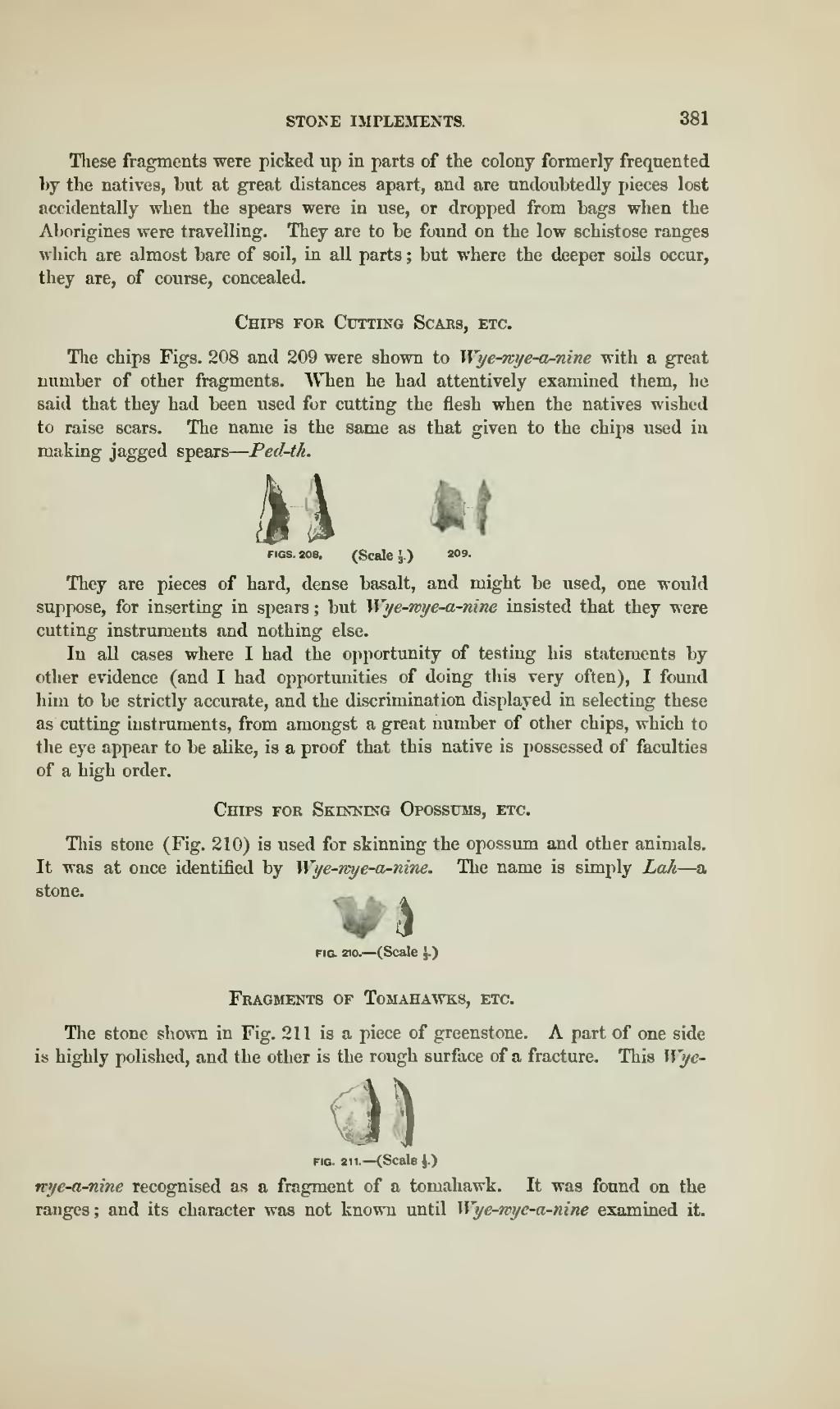These fragments were picked up in parts of the colony formerly frequented by the natives, but at great distances apart, and are undoubtedly pieces lost accidentally when the spears were in use, or dropped from bags when the Aborigines were travelling. They are to be found on the low schistose ranges which are almost bare of soil, in all parts; but where the deeper soils occur, they are, of course, concealed.
The chips Figs. 208 and 209 were shown to Wye-wye-a-nine with a great number of other fragments. When he had attentively examined them, he said that they had been used for cutting the flesh when the natives wished to raise scars. The name is the same as that given to the chips used in making jagged spears—Ped-th.
 |

| ||
| FIGS. 208, | (Scale ⅓.) | 209. |
They are pieces of hard, dense basalt, and might be used, one would suppose, for inserting in spears; but Wye-wye-a-nine insisted that they were cutting instruments and nothing else.
In all cases where I had the opportunity of testing his statements by other evidence (and I had opportunities of doing this very often), I found him to be strictly accurate, and the discrimination displayed in selecting these as cutting instruments, from amongst a great number of other chips, which to the eye appear to be alike, is a proof that this native is possessed of faculties of a high order.
This stone (Fig. 210) is used for skinning the opossum and other animals. It was at once identified by Wye-wye-a-nine. The name is simply Lah—a stone.
| FIG. 210.–(Scale ⅓.) |

|
| FIG. 211.–(Scale ⅓.) |
The stone shown in Fig. 211 is a piece of greenstone. A part of one side is highly polished, and the other is the rough surface of a fracture. This Wye-wye-a-nine recognised as a fragment of a tomahawk. It was found on the ranges; and its character was not known until Wye-wye-a-nine examined it.

